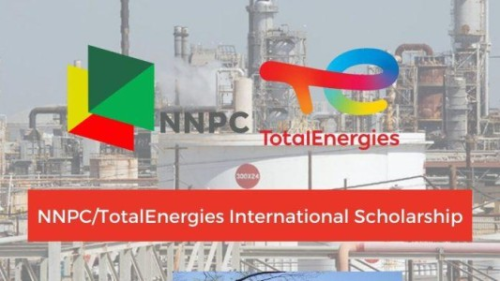Chemistry Keypoints: Rates of Chemical Reaction; Chemical reactions are fundamental processes that occur in both nature and industry. Understanding the factors that influence the rate of these reactions is crucial in controlling and optimizing chemical processes.
Chemistry Keypoints: Rates of Chemical Reaction
In this article, we will delve into the rates of chemical reactions, exploring the elementary treatments of various factors that can affect reaction rates, reaction rate curves, activation energy, and their significance in the world of chemistry.
Study other chemistry keypoints here
Factors Affecting Reaction Rates
(a) Temperature
Temperature is a fundamental factor influencing the rate of chemical reactions. According to the Arrhenius equation, the rate of a reaction increases exponentially with temperature. This can be exemplified through various reactions:
(i) Reaction between HCl and Na2S2O3: In this reaction, the rate increases as the temperature rises. Higher temperatures provide reactant molecules with more kinetic energy, resulting in increased collision frequency and energy, which ultimately lead to a higher reaction rate.
(ii) Reaction between Mg and HCl: Similarly, the reaction between magnesium and hydrochloric acid proceeds more rapidly at higher temperatures. The increased energy of the reacting particles leads to more effective collisions.
(b) Concentration (Pressure for Gaseous Systems)
Concentration, or in the case of gaseous systems, pressure, plays a significant role in determining reaction rates. The collision theory states that as the concentration of reactants increases, the frequency of molecular collisions also increases, thereby accelerating the reaction. Consider the following examples:
(i) Reaction between HCl and Na2S2O3: As the concentration of either HCl or Na2S2O3 increases, the reaction rate also increases. This is due to the greater number of reactant molecules available for collisions.
(ii) Reaction between HCl and Marble: In this case, as the concentration of HCl increases, the rate of the reaction with marble (calcium carbonate) accelerates. This is particularly evident in the effervescence of carbon dioxide gas when concentrated HCl is added to marble chips.
(c) Surface Area
The surface area of reactants can significantly affect the rate of a chemical reaction. This is particularly relevant when dealing with solid reactants. Consider the reaction between marble (CaCO3) and HCl:
(i) Powdered Form: When marble is in powdered form, it exhibits a larger surface area, allowing more collisions between the reactant particles. As a result, the reaction rate is faster.
(ii) Lumps of the Same Mass: In contrast, when marble is in the form of larger lumps with the same mass, the reaction rate is slower. This is because the surface area available for collisions is reduced.
Study other chemistry keypoints here
(d) Catalyst
Catalysts are substances that increase the rate of a chemical reaction without being consumed in the process. They achieve this by providing an alternative reaction pathway with a lower activation energy. Two examples are the decomposition of hydrogen peroxide (H2O2) and potassium chlorate (KClO3) in the presence or absence of MnO2:
In both cases, the addition of MnO2 as a catalyst significantly increases the rate of the reactions. Catalysts can be specific to certain reactions and can make reactions more environmentally friendly by reducing the required temperature or pressure.
Reaction Rate Curves
Reaction rate curves are graphical representations of how the rate of a reaction changes over time. They typically exhibit three distinct phases: an initial period of rapid increase in rate, followed by a slowing rate, and finally, a constant rate as the reactants are consumed. Interpreting these curves allows chemists to gain insights into reaction mechanisms and kinetics.
Activation Energy
Activation energy (Ea) is the minimum energy required for reactant molecules to overcome the energy barrier and initiate a chemical reaction. It is a critical parameter in understanding reaction rates. Qualitatively, the Arrhenius equation expresses the relationship between activation energy and reaction rate:
k=AeRT/Ea
Where:
- (k) is the rate constant.
- (A) is the pre-exponential factor.
- (Ea) is the activation energy.
- (R) is the universal gas constant.
- (T) is the absolute temperature.
Activation energy can be deduced from reaction rate curves by analyzing the slopes of these curves at different temperatures. A higher activation energy corresponds to a steeper slope.
Significance of Activation Energy
Activation energy is crucial in understanding reaction feasibility and controlling reaction rates. A few key points demonstrate its significance:
- Reaction Feasibility: Reactions with high activation energies are less likely to occur at low temperatures, making them more challenging to initiate. Understanding this concept helps in designing reactions that are feasible under specific conditions.
- Temperature Control: By knowing the activation energy, chemists can tailor reaction conditions to achieve desired rates. For instance, high-temperature conditions are chosen for reactions with high activation energies.
- Catalyst Design: Catalysts lower the activation energy, making reactions more efficient and economical. Catalysts are essential in industries where energy conservation and reaction efficiency are critical.
In conclusion, the rates of chemical reactions are influenced by several factors, including temperature, concentration (or pressure), surface area, and the presence of catalysts. Reaction rate curves provide valuable insights into reaction kinetics, while activation energy is a key parameter that governs reaction feasibility and rate control. Understanding these concepts is essential for chemists and engineers to optimize chemical processes and develop new technologies.








